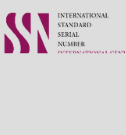Revised Nomenclature for Metabolic Dysfunction-Associated Steatotic Liver Disease
Keywords:
Lipids, Liver disease, Non-alcoholic fatty liver disease, Non-alcoholic steatohepatitisAbstract
Non-Alcoholic Fatty Liver Disease (NAFLD) refers to excessive accumulation of fat in the liver and is identified by the histological presence of steatosis in at least 5% of liver cells [1]. For decades, the term NAFLD has been used to refer to the liver conditions that are not caused by alcohol, causing misunderstandings and a lack of clarity in both clinical practice and patient education [2]. For these reasons, global hepatic societies developed and finalized a revised nomenclature for liver disease, which became available in June 2023.
The key points are as follows:
- Steatotic Liver Disease (SLD) identified histologically or by imaging, is selected as a primary term to cover the various etiologies of steatosis [3].
- The term Metabolic Dysfunction-Associated Steatotic Liver Disease (MASLD) has been introduced to replace NAFLD. MASLD is defined as patients with hepatic steatosis (fatty liver) and at least one of five cardiometabolic risk factors. The five criteria for adults are as follows:
- Body mass index ≥25 Kg/m2, or Waist-circumference >94 cm for men and >80 cm for women.
- Fasting plasma glucose level ≥100 mg/dL, two-hour post-load glucose level ≥140 mg/dL, HbA1c level ≥5.7 %, type-2 diabetes, or treatment for type-2 diabetes
- Blood pressure level ≥130/85 mmHg, or specific antihypertensive drug treatment
- Serum triglycerides level ≥150 mg/dL, or lipid lowering treatment
- Serum HDL-Cholesterol level ≤40 mg/dL for men and ≤50 mg/dL for women, or lipid lowering treatment [4].
- A new category, Metabolic Dysfunction-Associated Alcohol-Related Liver Disease (MetALD), has been introduced to describe individuals who, in addition to having MASLD, consume significant amounts of alcohol (210 g/week for men and 140 g/week for women).
- The term Metabolic Dysfunction-Associated Steatohepatitis (MASH) has been introduced to replace Non-Alcoholic Steatohepatitis (NASH).
- Individuals without metabolic parameters and no identifiable cause are termed Cryptogenic SLD [3].
The revised nomenclature for liver diseases instills hope in patients and opens the door to improved medical care and management strategies. For healthcare professionals, it provides a clearer framework for accurate diagnosis and effective treatment, ultimately enhancing patient outcomes. The introduction of MASLD is an essential step forward in the field of hepatology, reflecting our expanding knowledge of the complex relationship between liver health and metabolic dysfunction. As we continue to learn more, this new terminology will steer us towards better healthcare for all.
Downloads
References
. Han SK, Baik SK, Kim MY. Non-alcoholic fatty liver disease: Definition and subtypes. Clin Mol Hepatol. 2023;29(Suppl):S5-16. doi: 10.3350/cmh.2022.0424.
. Ramírez-Mejía MM, Qi X, Abenavoli L, Méndez-Sánchez N. The myth of the stigma of fatty liver: What does the evidence show? Ann Hepatol. 2024;29(6):101535. doi: 10.1016/j.aohep.2024.101535.
. American Association for the Study of Liver Diseases (AASLD). New MASLD nomenclature [internet]. 2024 [accessed 2024 December 14]. Available from: https://www.aasld.org/new-masld-nomenclature.
. Rinella ME, Lazarus JV, Ratziu V, Francque SM, Sanyal AJ, Kanwal F, et al. A multisociety Delphi consensus statement on new fatty liver disease nomenclature. Ann Hepatol. 2024;29(1):101133. doi: 10.1016/j.aohep.2023.101133.
Downloads
Published
Issue
Section
Categories
License
Copyright (c) 2024 Open Access Journal

This work is licensed under a Creative Commons Attribution-NonCommercial 4.0 International License.



